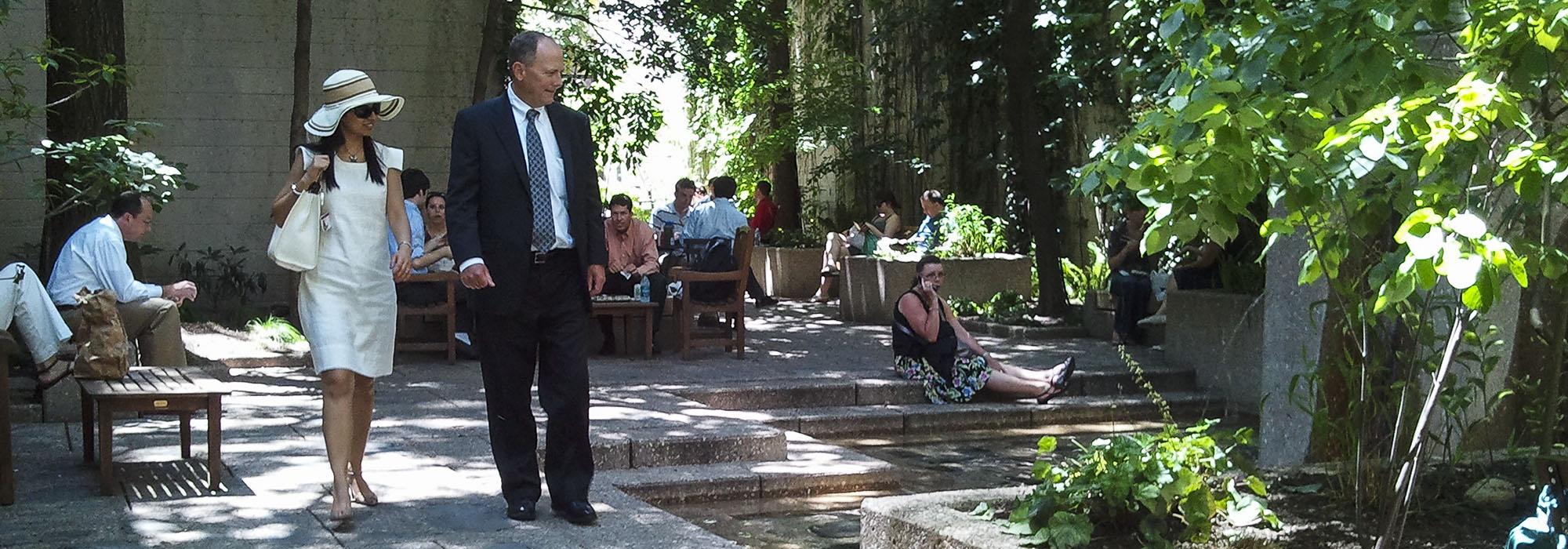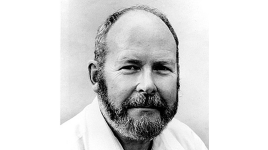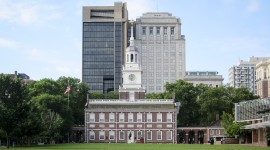John Francis Collins Biography
John Francis Collins (1936 - 2011) was born in Conshohocken, Pennsylvania. His father William was a newspaper columnist and his mother Florence was an artist and teacher. He learned to draw early in his childhood and, as a teenager, became involved with horticulture working at local nurseries. He started a commercial nursery in his parent’s backyard, growing trees and potted plants. At nineteen, he entered the landscape architecture program at Pennsylvania State University where he received a B.L.A. in 1959. Collins entered the Harvard Graduate School of Design, simultaneously working with his professor, Hideo Sasaki, as an associate at Sasaki Walker and Associates. Upon achieving his M.L.A. in 1962, he was awarded the Charles Eliot Traveling Fellowship resulting in an extended tour of Italy with his family.
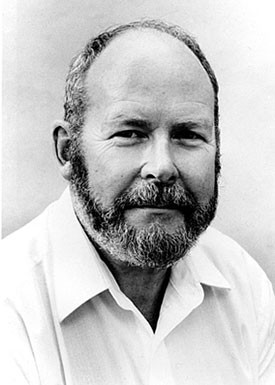
1963, Collins co-founded the firm of Adleman, Collins & DuTot in Philadelphia with colleagues Marvin Adleman and David DuTot. Later, this firm became Collins DuTot & Associates and in 1971, this firm joined with others to form The Delta Group, a regional landscape architecture, planning, engineering, and architecture firm with offices in Philadelphia and Baltimore, Maryland.
Collins’s designs stress multiple layers of meaning, providing subtle revelations of the cultural and natural histories of a particular place. For example, in Salem, Massachusetts, Collins used fountains and sculptural panels to reference the local geologic and literary history. His design for Philadelphia’s Society Hill completed early in his professional career with Collins and DuTot, reflects an understanding of human proportion and behavior and how design can respond to this knowledge. Intimately scaled tree-lined brick and cobblestone streets evoke the days when Philadelphia was the nation’s capital. A series of interior pedestrian ways, varying in size and character, link the community and its parks to the rich historical sites of Philadelphia. These passages provide a milieu for social and recreational interaction missing in many cities.
In 1965, Collins helped develop Delancey Park, a dynamic neighborhood landmark with greenways, a fountain and playground facilities. He also created a master plan for the Fairmount Park Commission, centered around a 1.25 mile park along the east bank of the Schuylkill River. For the next 40 years, Collins continued to work, often on a volunteer basis, to realize the vision of Schuylkill River Park. Additional Philadelphia projects include the Chestnut Park (now John F. Collins Park), the Philadelphia-Valley Forge Trail, Rittenhouse Square Master Plan and the revitalization of the vehicle and pedestrian experience in the Market Street corridor.
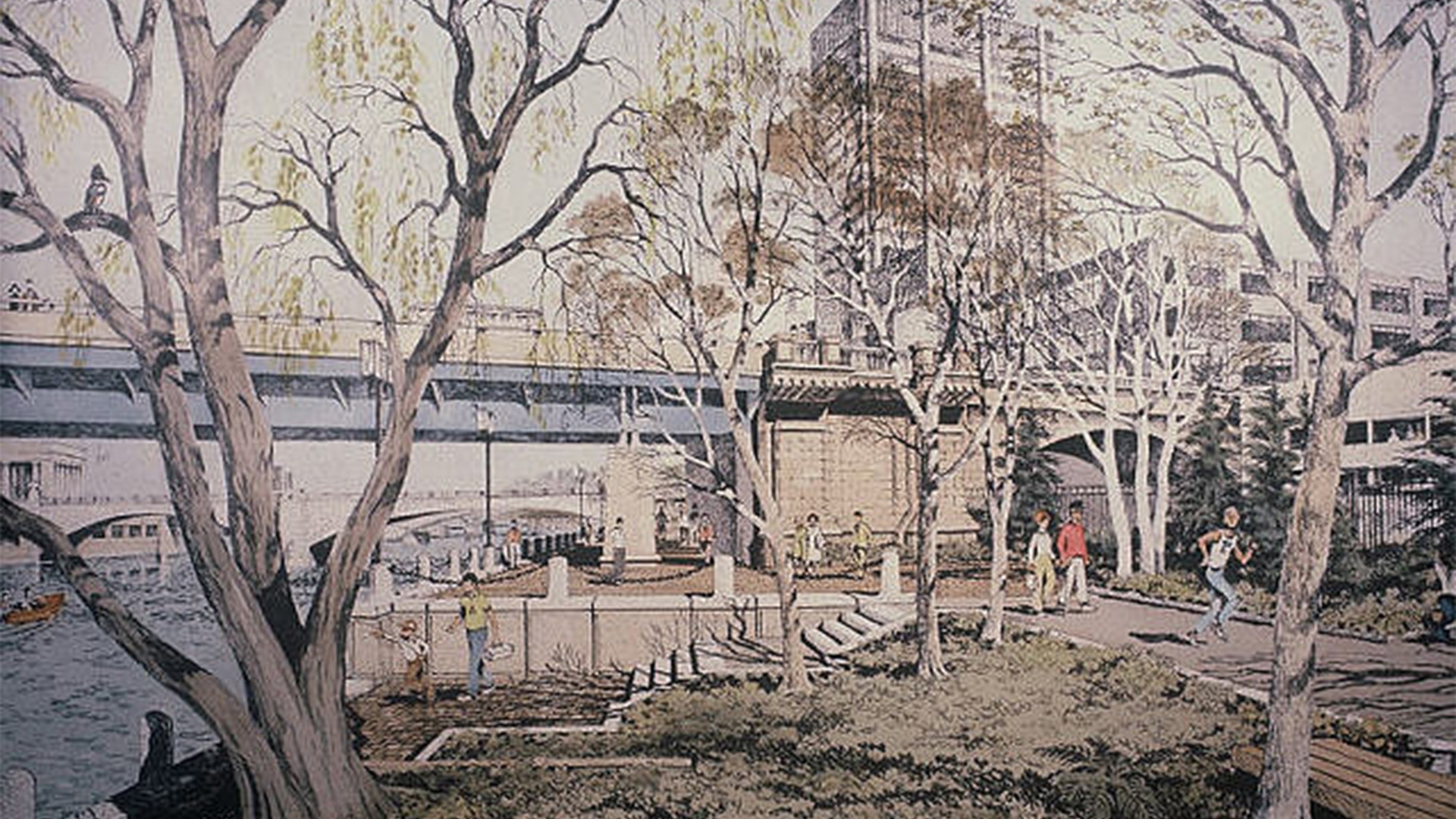
Throughout his career, Collins demonstrated a commitment to educating young professionals, serving as a lecturer, professor, and visiting studio critic at the University of Pennsylvania, Penn State, Harvard, Cornell, Drexel, Virginia and Louisiana State. He also taught at the School of Architecture and Planning in New Delhi, India. He developed horticultural therapy programs to help prison inmates and established community and teaching gardens in Philadelphia for public school children.
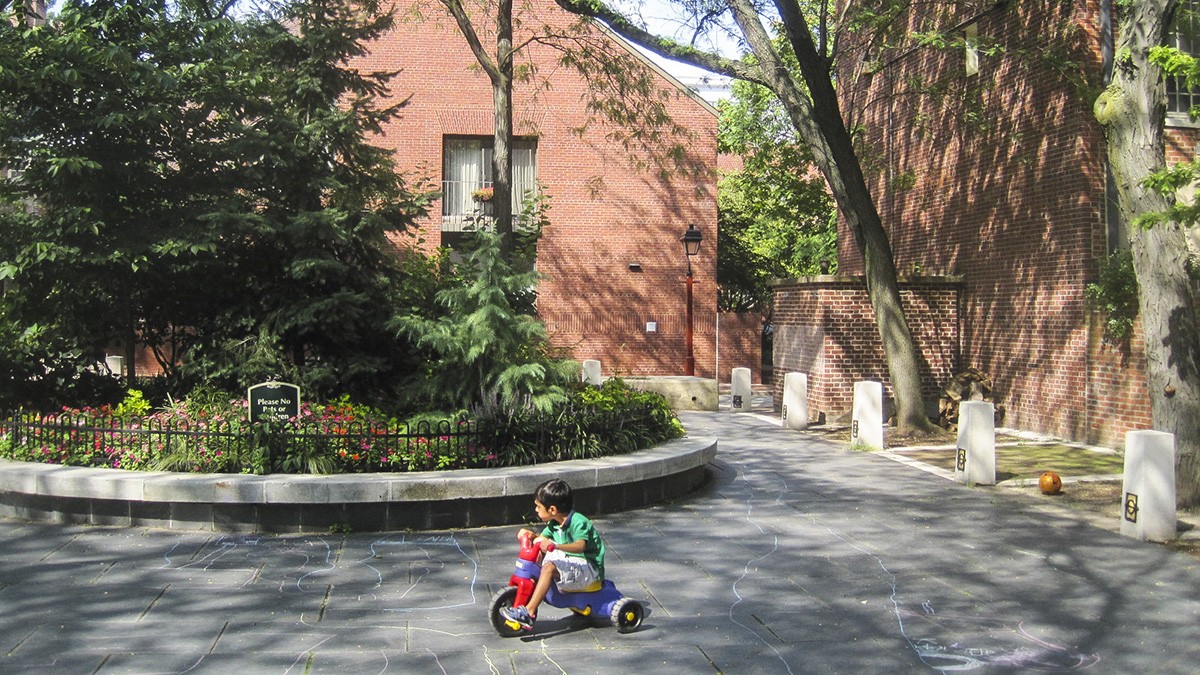
From 1988 to 1998, Collins was Chair of the Department of Landscape Architecture and Horticulture at Temple University, establishing four-year programs in both Landscape Architecture and Horticulture. Under his leadership, the department advanced in academic standards, achieving accreditation for the landscape architecture program; hiring new faculty; and reaching out to the community with urban design-build programs. The Ambler Campus, where the Landscape Architecture and Horticulture Department is located, benefited from student design build projects such as the new entry walls, ramp and pergolas at the administration building; new gardens; and a native plants nursery.
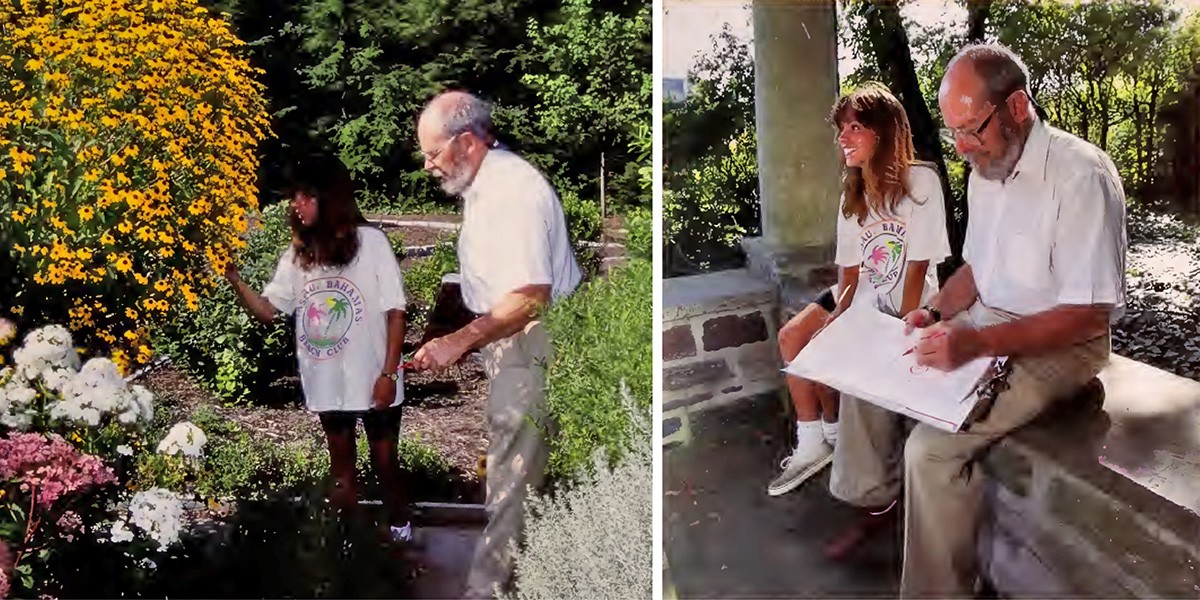
Two of Collin’s tenets are expressed in the design build approach: the value of hard work and the integration of various bodies of knowledge. Collins believed that focused, disciplined effort was required to conceptualize and build a work of art. He viewed construction as a continuation of the artistic process, in the tradition of classical sculpture or painting. Collins did not distinguish between hardscape aspects (pavement, walls, and built elements) and organic aspects (plants, soil) but sought to blur the boundaries between the two. He also believed the boundaries between disciplines ought to be blurred, intermingling design with construction and landscape architecture with planning, architecture, engineering, and horticulture to create holistic designs at the regional and local scales.
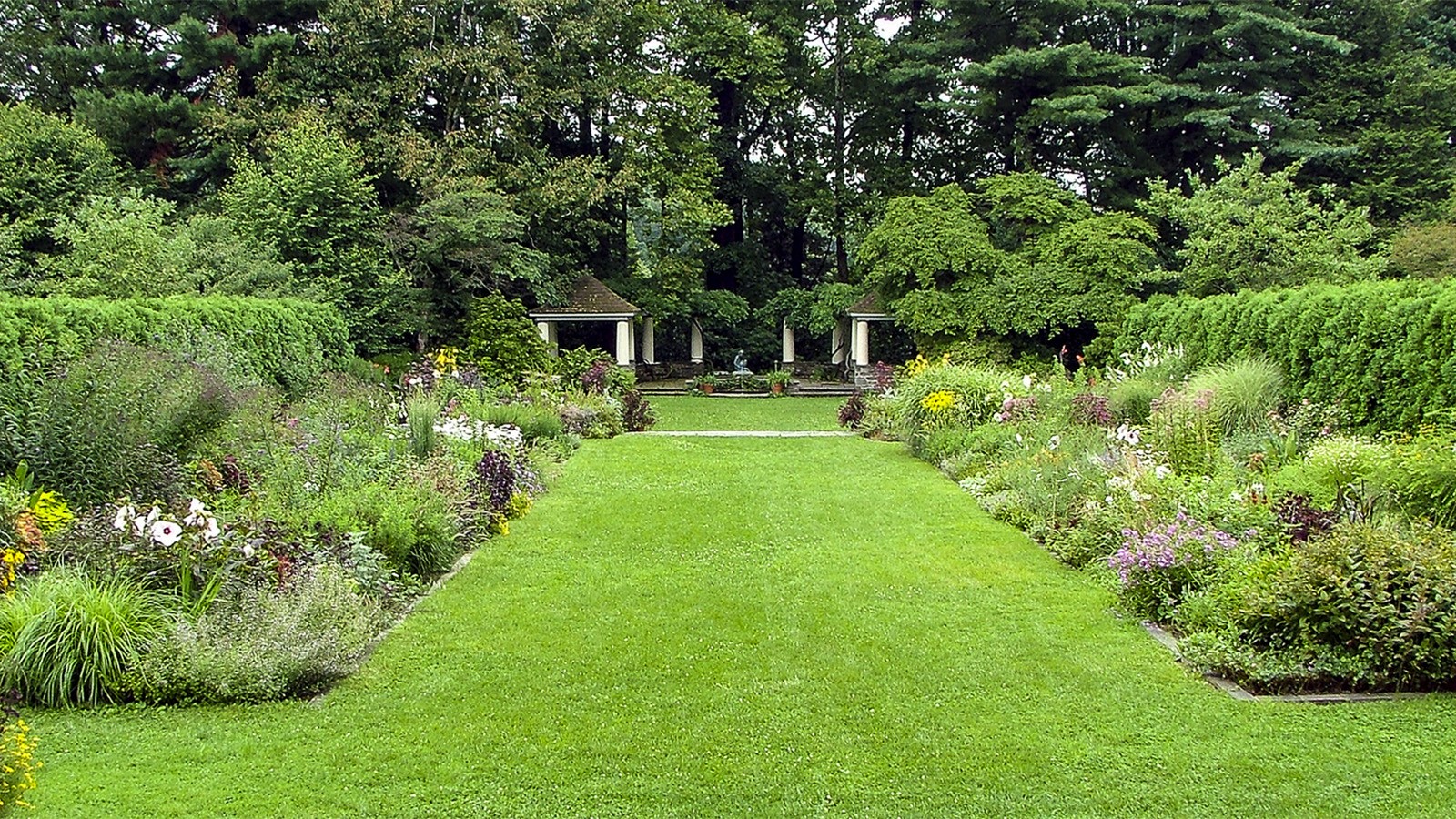
Collins’s legacy is seen through his built works and the lives that were positively impacted as a result of his advocacy, teaching and professional example. His showed enthusiasm, integrity and devotion to high professional ideals and anticipated the need to reach out across disciplines to solve complex problems, while helping government officials, community leaders and the public see the consequences of their decisions and actions. As a result, he advanced the Philadelphia region’s ability to work cooperatively toward meeting major, social and environmental challenges. Perhaps most important is his personal approach to creativity and the notion that cities can be civilizing places whose design can provide a connection with the natural world.
Collins was made a Fellow of the American Society of Landscape Architects in 1993. In 2010, he received a prestigious national award: the Jot Carpenter Medal from the American Society of Landscape Architects. The medal recognizes sustained and significant contribution to landscape architectural education. Collins passed away on August 5, 2011.
About the Author
Mary Myers, Ph.D, FCELA is chair of the Landscape Architecture and Horticulture Department, Temple University.
Jim Searing is a retired Ernst & Young partner, a strategy consultant, and the "TreeStrategist" on Twitter where he shares his knowledge of, and passion for, trees. While attending Temple University's Landscape Architecture program in pursuit of this passion, Jim researched and wrote about John Collins.



